Circular 685
Marcy Ward and Craig Gifford
College of Agriculture, Consumer and Environmental Sciences, New Mexico State University
Authors: Respectively, Extension Livestock Specialist and Extension Beef Cattle Specialist, Department of Extension Animal Sciences and Natural Resources, New Mexico State University. (Print friendly PDF)
The Importance of Proper Nutrition
When labor and fuel for feed delivery, equipment depreciation, and feed costs are combined, nutrition represents the largest cost in sheep production. A producer must know the animal’s nutritional requirements during the different phases of production, the nutrient composition of available feedstuffs, and how to provide the available feedstuffs to meet the animal’s requirements.
Understanding the changes in nutritional requirements for sheep throughout the year will allow producers to fine-tune their nutrition program to reduce costs while maximizing production. Nutrition should be managed to support optimal health, be efficient and economical, and must minimize the potential for nutrition-related problems.
Nutrition of the Ewe
A ewe’s nutritional needs do not stay the same; instead, they vary largely with her stage and level of production. For 16 to 20 weeks of the year, the ewe’s energy needs are very critical (such as during breeding, immediately before lambing, and while lactating). Figure 1 demonstrates the change in intake requirements (as % of body weight; BW) over the course of a ewe’s productive year. Other nutrients, such as energy, protein, vitamins, and minerals, will follow the same requirement pattern. Intake and nutrient demand will also increase with each additional lamb per pregnancy.

Figure 1. Dry matter intake requirements of a 175-lb (80-kg) ewe as a percent of body weight (% of BW) throughout a production year.
One of the most reliable sources of information regarding sheep nutrition is Nutrient Requirements of Small Ruminants: Sheep, Goats, Cervids, and New World Camelids (2007), produced by the National Research Council (NRC). Table 1 illustrates the specific requirements of small-, medium-, and larger-framed ewes in different physiological stages of production. Use the data only as a guideline, not as rigid standards. With grazing sheep, their requirements and diets can vary greatly with changing forage quality and availability. However, if producers follow the NRC guidelines, the flock’s nutritional requirements will be met as closely as scientifically possible at this time.
|
Table 1. Nutritional Requirements of Mature Ewes |
|||||||
|
Body Weight (lb) |
Gain |
% of Body Weight |
Dry Matter Intake 1 (lb) |
Total Digestible Nutrients 2 |
Crude Protein 3 (CP; lb) |
Calcium (Ca; grams) |
Phosphorus (P; grams) |
|
Maintenance |
|||||||
|
112 |
1.83 |
2.05 |
1.10 |
0.15 |
2.0 |
1.5 |
|
|
157 |
1.68 |
2.66 |
1.40 |
0.20 |
2.4 |
2.0 |
|
|
202 |
1.58 |
3.20 |
1.69 |
0.24 |
2.8 |
2.5 |
|
|
Breeding |
|||||||
|
112 |
0.05 |
2.01 |
2.27 |
1.19 |
0.18 |
2.4 |
1.8 |
|
157 |
0.06 |
1.83 |
2.93 |
1.56 |
0.23 |
2.9 |
2.4 |
|
202 |
0.07 |
1.74 |
3.51 |
1.87 |
0.28 |
3.4 |
2.9 |
|
Early Gestation |
|||||||
|
112 |
0.05 |
2.32 |
2.61 |
1.37 |
0.21 |
3.8 |
2.8 |
|
157 |
0.06 |
2.09 |
3.29 |
1.76 |
0.26 |
4.5 |
3.5 |
|
202 |
0.07 |
1.95 |
3.94 |
2.09 |
0.32 |
5.2 |
4.2 |
|
Late Gestation |
|||||||
|
112 |
0.17 |
2.89 |
3.26 |
1.73 |
0.28 |
5.1 |
3.5 |
|
157 |
0.24 |
2.58 |
4.05 |
2.15 |
0.34 |
6.1 |
4.4 |
|
202 |
0.29 |
2.38 |
4.84 |
2.66 |
0.41 |
7.1 |
5.2 |
|
Early Lactation |
|||||||
|
112 |
-0.04 |
2.51 |
2.84 |
1.81 |
0.39 |
4.6 |
3.9 |
|
157 |
-0.04 |
2.80 |
4.41 |
2.34 |
0.50 |
5.9 |
5.5 |
|
202 |
-0.05 |
2.56 |
5.18 |
2.75 |
0.58 |
6.7 |
6.4 |
|
Mid Lactation |
|||||||
|
112 |
2.80 |
3.15 |
1.67 |
0.34 |
3.9 |
3.6 |
|
|
157 |
2.51 |
3.94 |
2.09 |
0.42 |
5.0 |
4.8 |
|
|
202 |
2.30 |
4.66 |
2.47 |
0.48 |
5.3 |
5.2 |
|
|
Late Lactation |
|||||||
|
112 |
0.02 |
2.52 |
2.84 |
1.51 |
0.26 |
3.0 |
2.7 |
|
157 |
0.03 |
2.29 |
3.62 |
1.91 |
0.33 |
3.6 |
3.5 |
|
202 |
0.04 |
2.12 |
4.30 |
2.27 |
0.39 |
4.2 |
4.1 |
|
Data modified from NRC (2007). 1 Dry matter intake (DMI) does not contain the moisture content of a feedstuff; annual forages average 85% dry matter (example: a 157-lb ewe in early lactation requires 4.41 lb DMI, or 5.2 lb actual forage). 2 TDN = total digestible nutrients as a measurement of energy requirements. 3 CP = crude protein, assuming the diet base is 20% indigestible in the rumen. |
|||||||
Maintenance (typically 80–90 days)
Maintenance of the ewe is generally thought of in terms of her nutritional requirements when dry because at that time her requirements are the lowest of the year. Feed levels can be lowered to reduce the feed cost during the early stages of gestation and when ewes are dry. However, wool production is a continuous process that must be considered as part of the nutritional requirements throughout the year. The ewe’s mature body weight will also affect how much feed she will need to simply maintain her condition.
Breeding (typically 60–70 days)
A ewe’s nutritional priorities can be ranked: First is to maintain herself, second is to grow, third is for lactation, and last is reproduction. That means if the requirements for the first three stages of production are not met, she will not reproduce. Therefore, proper nutrition is critical before, during, and after the breeding season. Ewes that have not had a properly balanced diet, including adequate phosphorus and vitamin A for example, may have a poor lamb crop percentage.
Flushing
- Flushing is a management strategy used in the industry where ewes are given additional energy supplementation to improve their ovulation rates. The concept is to improve the ewe’s body condition just before and during the breeding season.
- Flushing has a greater effect early in the breeding season, but it can also be beneficial late in the season because it tends to increase the opportunity for all ewes to become pregnant.
- Depending on the time of year, flushing may be achieved by either moving the ewes to better pasture shortly before breeding or providing a supplemental energy source (e.g., 3/4 to 1 pound of whole corn per head per day).
- The length of the flushing period can vary, but it probably should begin 21 days before the breeding season and continue through one estrous cycle (17 days) into the breeding season if possible.
Gestation (140–150 days)
Gestation is broken up into two phases: early and late. It is important to note that the nutritional requirements change throughout gestation. Therefore, feeding management may be fine-tuned to reduce costs and prevent ewes from becoming too fat or too thin.
Early (0–50 days)
- A ewe’s nutritional requirements are only slightly higher than they are for maintenance.
- The goal should be to maintain good body condition in order to sustain the pregnancy. Significant weight loss at this time could result in early embryonic loss.
Late (105 days–lambing)
- Fetal growth is the greatest during the last 50 or 60 days of gestation.
- The nutritional status of the ewe should increase by approximately 20%.
- It is critical not to increase feeding overnight, but rather slowly over time before ewes reach this stage of pregnancy.
- If feed and body weight are not managed correctly at this stage, ewes can experience metabolic disorders shortly before or right after lambing.
Lactation (60–90 days)
As with gestation, lactation can be broken into stages: early, mid, and late. This can also help in management strategies for nutrition, weaning, and time of breeding. If the ewe’s requirements are not adequately met for lactation, she will rapidly decline in her daily production. Once ewes experience a decline in milk production, due to interruptions in nutrition or water or reduced demand from the lamb, they will not regain their previous production level.
Early
The ewe’s nutritional requirements continue to climb during early lactation. This period is generally considered to be the first 14 to 21 days after lambing. Additional protein and energy are required in order to maintain reasonable milk production.
Mid
The ewe peaks in her lactation cycle approximately 21 days after lambing. She requires both the greatest levels of energy and digestible protein during this time. Milk production gradually declines after this time as the lambs start to use more forage in their diet. Mid lactation is generally considered to be from 21 to 60 days after lambing.
Late
Late lactation is considered to be from day 60 to day 90 of lactation. By day 60, milk production is so low that it is no real benefit to the lamb(s) as a source of nutrition. Therefore, most production systems will wean their lambs at 60 days of age. If ewes are asked to milk too long, it could impede their ability to gain weight or to rebreed.
Nutrition of the Lamb
As with all growing animals, young lambs require a more nutrient-dense diet to properly meet their growth requirements (Table 2). Lamb nutrition management can start before they are weaned. It is common in many sheep operations to creep feed lambs while they are still on the ewe. Creep feeding provides additional supplementation that the ewe cannot provide. There are many kinds of creep feeders available on the market to choose from (Figure 2).
|
Table 2. Nutritional Requirements of Growing Ewe Lambs |
||||||||||
|
Body Weight (lb) |
Gain |
% of Body Weight |
Dry Matter |
Total Digestible Nutrients2 |
Crude Protein3 |
Calcium |
Phosphorus |
|||
|
Growing Yearling at 40% of Mature Weight |
||||||||||
|
68 |
0.55 |
3.01 |
2.03 |
1.62 |
0.31 |
4.4 |
3.3 |
|||
|
68 |
0.66 |
3.42 |
2.32 |
1.85 |
0.36 |
5.1 |
3.9 |
|||
|
68 |
0.88 |
4.25 |
2.86 |
2.27 |
0.46 |
6.6 |
5.1 |
|||
|
Breeding |
||||||||||
|
90 |
0.13 |
3.20 |
2.88 |
1.91 |
0.24 |
3.6 |
2.1 |
|||
|
135 |
0.20 |
3.02 |
4.07 |
2.70 |
0.34 |
4.9 |
3.0 |
|||
|
180 |
0.25 |
2.91 |
5.81 |
3.47 |
0.44 |
6.2 |
3.9 |
|||
|
Early Gestation |
||||||||||
|
90 |
0.13 |
3.33 |
2.99 |
1.98 |
0.26 |
4.4 |
2.8 |
|||
|
135 |
0.19 |
3.11 |
4.19 |
2.79 |
0.35 |
5.8 |
3.8 |
|||
|
180 |
0.24 |
2.96 |
5.33 |
3.53 |
0.45 |
7.1 |
4.8 |
|||
|
Late Gestation |
||||||||||
|
90 |
0.24 |
3.01 |
2.70 |
2.16 |
0.28 |
5.8 |
3.4 |
|||
|
135 |
0.36 |
3.48 |
4.70 |
3.11 |
0.42 |
8.1 |
5.1 |
|||
|
180 |
0.44 |
3.29 |
5.92 |
3.91 |
0.52 |
9.8 |
6.4 |
|||
|
Early Lactation |
||||||||||
|
90 |
-0.03 |
3.47 |
3.13 |
1.67 |
0.37 |
4.4 |
3.9 |
|||
|
135 |
-0.04 |
3.01 |
4.07 |
2.16 |
0.46 |
5.5 |
5.1 |
|||
|
180 |
-0.04 |
2.72 |
4.88 |
2.59 |
0.55 |
6.4 |
6.0 |
|||
|
Mid Lactation |
||||||||||
|
90 |
3.06 |
2.75 |
1.46 |
0.30 |
3.5 |
3.1 |
||||
|
135 |
2.68 |
3.62 |
1.91 |
0.38 |
4.3 |
4.1 |
||||
|
180 |
2.44 |
4.30 |
2.32 |
0.46 |
5.0 |
4.9 |
||||
|
Late Lactation |
||||||||||
|
90 |
0.11 |
3.81 |
3.42 |
1.82 |
0.31 |
3.7 |
2.4 |
|||
|
135 |
0.16 |
3.46 |
4.68 |
2.48 |
0.40 |
4.9 |
3.3 |
|||
|
180 |
0.21 |
3.28 |
5.90 |
3.13 |
0.52 |
6.1 |
4.2 |
|||
|
Data modified from NRC (2007). 1 Dry matter intake (DMI) does not contain the moisture content of a feedstuff; annual forages average 85% dry matter (example: 2 TDN = total digestible nutrients as a measurement of energy requirements. 3CP = crude protein, assuming the diet base is 20% indigestible in the rumen. |
||||||||||

Figure 2. Example of a creep feeder.
Nutrition should be a priority with young growing ewe lambs. Separate management of these young animals may be necessary to optimize growth, genetic potential, and profitability. Additional supplementation is generally needed because native forages often fall short of meeting growth requirements.
Nutrition of the Ram
Nutrition of the ram should also be considered. A producer’s goal should be to increase a ram’s body condition prior to the breeding season since they tend to lose significant weight during the breeding season. If rams are over-conditioned, however, it may impact their libido and stamina for adequate breeding rates. Table 3 gives examples of a ram’s nutritional requirements at various weights and stages of production.
|
Table 3. Nutritional Requirements of Rams |
||||||||||||
|
Body Weight (lb) |
Gain |
% of Body Weight |
Dry Matter |
Total Digestible Nutrients2 |
Crude |
Calcium |
Phosphorus (P; grams) |
|||||
|
Growing Ram at 40% of Mature Weight |
||||||||||||
|
112 |
0.55 |
3.20 |
3.60 |
2.39 |
0.36 |
4.7 |
3.9 |
|||||
|
112* |
0.66 |
3.72 |
4.19 |
3.13 |
0.47 |
6.5 |
5.5 |
|||||
|
112* |
1.10 |
4.25 |
4.77 |
3.80 |
0.56 |
8.0 |
6.8 |
|||||
|
Maintenance |
||||||||||||
|
225 |
1.77 |
3.98 |
2.11 |
0.28 |
3.3 |
3.1 |
||||||
|
281 |
1.67 |
4.70 |
2.50 |
0.33 |
3.8 |
3.7 |
||||||
|
337 |
1.60 |
5.40 |
2.86 |
0.37 |
4.3 |
4.3 |
||||||
|
Pre-Breeding |
||||||||||||
|
225 |
0.10 |
1.95 |
4.39 |
2.32 |
0.33 |
3.6 |
3.4 |
|||||
|
281 |
0.12 |
1.84 |
5.18 |
2.75 |
0.39 |
4.2 |
4.1 |
|||||
|
337 |
0.14 |
1.76 |
5.94 |
3.15 |
0.45 |
4.7 |
4.7 |
|||||
|
*Supplementation will be required to obtain production goals. |
||||||||||||
|
Data modified from NRC (2007). 1 Dry matter intake (DMI) does not contain the moisture content of a feedstuff; annual forages average 85% dry matter (example: 2 TDN = total digestible nutrients as a measurement of energy requirements. 3 CP = crude protein, assuming the diet base is 20% indigestible in the rumen. |
||||||||||||
Assessing Nutritional Status
The body condition scoring system is an excellent tool for monitoring nutritional status of a flock. The amount of fat cover can be associated with body energy reserves. This is important because there is a direct correlation between body condition and ovulation rate and number of lambs born (Ducker and Boyd, 1977).
For sheep, the scoring system has a range of one to five, with one being extremely thin and five being extremely fat. Extremes in condition—excessively fat and excessively thin—can result in lower conception rates and higher embryonic mortality.
Due to wool cover, physical palpation is the best practice to score a ewe’s body condition. The goal is to feel the level of fat cover over the vertebrae, ribs, and loin (vertebrae between the last rib and hip bone).
Figure 3 shows how to palpate this area and describes the body condition scores.
It is best to assess body condition twice a year: at breeding and again at weaning. However, if once a year is the most practical, recording body condition at weaning will tell you how much condition needs to be gained before the next breeding season.
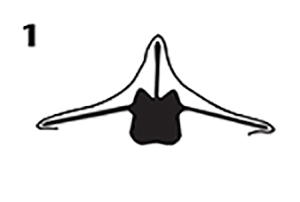 |
Backbone The bones form a sharp, narrow ridge. Each vertebra can be easily felt as a bone under the skin. There is only a very small eye muscle. The sheep is quite thin (virtually unsalable). |
Short Ribs The ends of the short ribs are very obvious. It is easy to feel the squarish shape of the ends. Using fingers spread about 1/2 in. apart, it feels like the fingernail under the skin with practically no covering. |
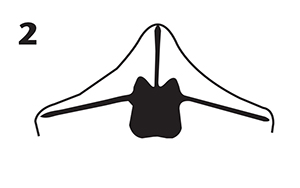 |
Backbone The bones form a narrow ridge, but the points are rounded with muscle. It is easy to press between each bone. There is a reasonable eye muscle. Store condition; ideal for wethers and lean meat. |
Short Ribs The ends of the short ribs are rounded, but it is easy to press between them. Using fingers spread 1/4 in. apart, the ends feel rounded like finger ends. They are covered with flesh, but it is easy to press under and between them. |
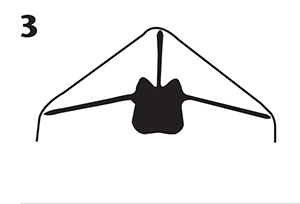 |
Backbone The vertebrae are only slightly elevated above a full eye muscle. It is possible to feel each rounded bone, but not to press between them. (Forward store condition ideal for most lamb markets now. No excess fat.) |
Short Ribs The ends of short ribs are well rounded and filled in with muscle. Using four fingers pressed tightly together, it is possible to feel the rounded ends, but not between them. They are well covered and filled in with muscle. |
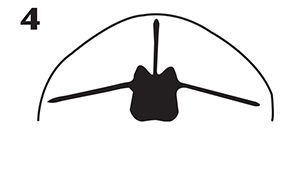 |
Backbone It is possible to feel most vertebrae with pressure. The back bone is a smooth, slightly raised ridge above full eye muscles, and the skin floats over it. |
Short Ribs It is only possible to feel or sense one or two short ribs and only possible to press under them with difficulty. It feels like the side of the palm, where maybe one end can just be sensed. |
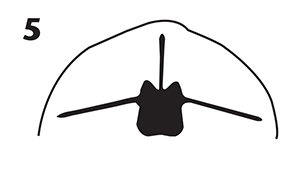 |
Backbone The spine may only be felt (if at all)by pressing down firmly between the fat-covered eye muscles. A bustle of fat may appear over the tail (wasteful and uneconomic). |
Short Ribs It is virtually impossible to feel under the ends since the triangle formed by the long ribs and hip bone is filled with meat and fat. The short rib ends cannot be felt. |
Figure 3. Body condition score assessment (source: Lifetimewool, 2011).
Factors Affecting Nutritional Status
Water
Though there is no specific requirement for water, it is fundamental for life, health, and production. Stage of production (growing, lactating, dry, etc.), air temperature, and water quality all affect water intake. It is imperative that fresh, clean, reliable water sources are made available at all times. Drought and also excessive moisture can greatly impact water quality. It is therefore important to monitor water quality through regular testing.
Age
Yearling energy and protein requirements are on average 15% higher than for adult sheep due to yearlings’ growth. These requirements generally cannot be met by forage alone. Older ewes may need additional nutrition since their ability to digest and absorb nutrients decreases with age.
Exercise
Grazing sheep will use more energy than sheep in confinement. Though specific requirements are not fully understood, the additional energy needed for movement should be considered. Pasture size, topography, and distance between water sources are all contributing factors to nutritional needs.
Climate
The more extreme the weather, the more nutrition the animal will require for maintenance. Using wind breaks and providing dry ground helps minimize reduced performance due to weather.
The length and density of the fleece also affects energy requirements. Wool plays an important role in protecting sheep from both heat and cold; the insulating properties of wool help to cool the sheep in the heat of summer and keep body temperatures warmer in winter. Without wool, a sheep’s energy requirements would be higher. Finer wool breeds, for example, tend to be more adaptable to hotter, dryer climates.
Impact of twins and multiples on lactation and body condition of the ewe
It can be difficult for a ewe raising more than one lamb to maintain her body condition. If forage is not abundant, additional supplementation may be warranted to prevent ewes from getting too thin. Creep feeding lambs is also recommended to reduce the demand on ewes.
Body condition
In most sheep production situations, ewes naturally go through body condition changes due to increased or decreased nutrient demand. It is typically most economical to increase body condition after weaning and before the next breeding season.
It takes more feed to maintain a fat sheep at a constant weight than a properly conditioned sheep. Keeping the sheep excessively fat is not only expensive because of feed costs but also detrimental to the ewe’s reproductive capabilities and overall production efficiency.
A ewe can lose up to 6% of her body weight during lactation. She will then likely recover this weight loss during the dry period.
Weight gain during gestation should consist primarily of fetal growth. If ewes become over-conditioned during this time, it may become problematic, causing increased dystocia (difficult lambing) and metabolic problems.
Nutrition-related Diseases and Problems
Sheep are prone to several nutrition-related diseases. With proper management, however, most of these diseases can be avoided.
Ketosis (pregnancy toxemia)
Ketosis is most common in ewes carrying twins. The ewe cannot physically eat enough to meet the nutritional demands of the growing fetuses in the last trimester of gestation. As a result, the ewe will start to utilize her fat stores as a source of energy. Symptoms typically are not obvious until birth, or shortly before. She will go off feed, which accelerates the condition. The ewe will not have the physical energy to stand. Her breath will also have the smell of acetone. Treatment requires an infusion (preferably via IV, or orally) of glucose. A 4- to 6-oz dose of propylene glycol can then be administered orally 2 to 3 times per day until she recovers. If she goes down before birth, it is recommended to induce labor with dexamethasone (5 mL subcutaneously) provided she is only within days of lambing. Ketosis can be prevented by maintaining moderate body condition throughout gestation. Excessively fat and excessively thin ewes are more prone to ketosis.
Milk fever (hypocalcemia or low blood calcium)
As with ketosis, milk fever is more common in ewes carrying twins or multiples. Blood calcium levels drop below normal levels due to the increased demand of the growing fetuses and milk production just before lambing. Symptoms are very similar to ketosis as well. The ewe becomes depressed, but may also show signs of sickness, such as a runny nose. Hypocalcemia can be lethal if not treated when the onset of symptoms arises. An intravenous infusion of calcium gluconate will result in a fairly rapid recovery. This may also treat a ketotic condition if it is also present. A properly balanced mineral program can help prevent milk fever prior to lambing; however, additional dietary calcium is recommended after lambing. Forages such as alfalfa or clover can easily meet the increased requirement.
Enterotoxemia (overeaters disease)
Toxins produced by bacteria in the hind gut are the primary cause of this disease. Too much high-starch feeds such as corn can also contribute to the disease. Enterotoxemia develops very rapidly and often causes death before antibiotic treatment can be administered. With proper annual vaccination with a Clostridium perfringens Types C and D vaccine, the disease is very manageable. Most 7- and 8-way Clostridial vaccines contain protection against enterotoxemia.
Copper toxicity
Sheep can accumulate copper in the liver much more efficiently than other animals, and some breeds of sheep (British breeds for example) are even more efficient at accumulating copper in the liver than others. As a result, sheep are vulnerable to copper toxicity. Dietary copper levels over 5 ppm can result in toxicosis. Most cattle and horse feeds exceed these levels. Unless feeding equipment is cleaned between uses, simply mixing sheep feed in the same equipment as a ration for another species (cattle for example) can result in toxic levels of copper for sheep. Always verify with your feed supplier that the rations have appropriate levels of copper for sheep.
Polio (sulfur toxicity) from water source and feed
Dietary sulfur levels exceeding 0.3% of the diet can result in polio. Symptoms include incoordination, head pressing, and death. Excess sulfur can come from either water or feed sources naturally high in sulfur.
Urinary calculi (water belly) from feed sources high in silica (i.e., wheat and wheat byproducts), a calcium:phosphorus imbalance, and dehydration
Occurs in rams and wethers and presents itself as edema fluid buildup behind the sheath, caused by a blockage due to phosphate salt accumulation in the urinary tract. The condition is more common in wethers or rams on a high-grain, low-forage ration.
Nutritional muscular dystrophy (white muscle disease) mostly for grazing ewes
White muscle disease is caused by a deficiency in selenium. It is important to always have a sheep mineral available free choice to prevent selenium deficiency.
Supplementation strategies when forage is not enough
The nutritional quality of forages changes throughout the course of a year, and forage alone will not meet the nutritional requirements of sheep at certain stages of production. The questions are what to feed, when to feed it, and how much to feed. Nutritional requirement tables generally refer to pounds of intake of a nutrient needed to meet requirements. When reading a forage analysis or feed tag, however, the nutritional information is a percentage. Table 4 is an example of how to quickly determine supplementation needs of an animal.
|
Table 4. Scenario: Ewe Lamb Weighing 90 lb on Fall Forage, Moderate Gains Desired |
|||||||
|
Daily Requirements (from Table 2) |
|||||||
|
Body |
Gain |
% of Body Weight |
Dry Matter Intake (lb) |
Total Digestible Nutrients (TDN; lb) |
Crude Protein |
Calcium (Ca; grams) |
Phosphorus |
|
Breeding in the Early Fall |
|||||||
|
90 |
0.13 |
3.20% |
2.88 |
1.91 |
0.24 |
3.6 |
2.1 |
|
TDN %* |
CP % |
Ca % |
P % |
||||
|
66% |
8.3% |
0.27% |
0.16% |
||||
|
*% represents portion needed in the total diet to meet desired gains. |
|||||||
The ewe lamb’s total intake is not known, and therefore the concentration (%) of nutrients in the forage is used to estimate any deficiencies that may exists (Table 5).
|
Table 5. Nutritional Content of Forage Compared to Ewe Lamb Requirements |
||
|
Forage |
Yearling Ewe Requirements |
|
|
Total Digestible Nutrients (TDN) % |
45 |
66 |
|
Crude Protein (CP) % |
7 |
8.3 |
|
TDN and CP were converted from lb requirement to dietary % to demonstrate the concentration differences between what the forage supplies and what the animal needs. |
||
How to make up the difference
Determine how much nutrition the ewe lamb is getting from the forage:
Assumed dry matter intake = 2.88 lb
Total energy intake (TDN) = 2.88 × 0.45 (% from forage) = 1.3 lb
Determine the potential nutrient deficiency:
Ewe lamb requirement (from Table 2) − nutrient provided by forage
1.91 lb of TDN − 1.3 lb from forage
Deficiency = 0.61 lb TDN
Find/use a feedstuff that will help make up the deficiency. Corn can be an efficient and cheap way to meet the need for additional energy. If using straight corn, however, limit it to less than 1% of the animal’s body weight because it can impact forage digestion.
Deficiency / nutrient content of supplement
0.61 lb / 0.90 (% TDN of corn) = 0.67 lb of corn
Corn is also slightly higher (%10) in protein than fall forage, so it can also help meet those deficiencies as well. Once the breeding season is over, however, it is recommended that you provide a protein supplement instead of straight corn since protein becomes very limited in the forage over the winter months.
From a practicality standpoint, feeding 0.75 lb per day of corn to ewe lambs approximately 30 days prior to breeding should result in increased body condition and ovulation rates. Feed the corn gradually. Offer 0.25 lb for a couple of days, then 0.5 lb, and finally 0.75 lb. This allows the rumen to adjust and prevents bloat or digestive upset.
Summary
Grazing sheep have a few more challenges than captive flocks as it relates to nutrition because the nutritional requirements of the ewe change throughout the course of the year. At times, the ewe’s requirements are not met by what the forage is providing, and supplementation may therefore be needed. Understanding what those requirements are and how to make up the deficiencies can result in optimal health and performance of the flock. Monitoring body condition will help ensure proper nutrition is being provided.
References
Ducker, M.J., and J.S. Boyd. 1977. The effect of body size and body condition on the ovulation rate of ewes. Animal Science, 24, 377–385.
Lifetimewool. 2011. Condition scoring of sheep [Online]. Retrieved August 12, 2016, from http://www.lifetimewool.com.au/conditionscore.aspx
Mathis, C.P., and T. Ross. 2005. Sheep production and management [Circular 604]. Las Cruces: New Mexico State University Cooperative Extension Service.
National Research Council (NRC). 2007. Nutrient requirements of small ruminants: Sheep, goats, cervids, and New World camelids. Washington, D.C.: The National Academies Press.
For further reading
CR-374: New Mexico Range Plants
https://pubs.nmsu.edu/_circulars/cr-374/
CR-678: Poisonous Plants of New Mexico Rangelands
https://pubs.nmsu.edu/_circulars/CR678/
CR-684: Sheep Breeds Best Suited for Arid Climates
https://pubs.nmsu.edu/_circulars/CR684/
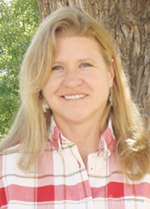
Marcy Ward Marcy Ward is the Extension Livestock Specialist at NMSU. She received her B.S. and M.S. in animal science from Colorado State University and NMSU, respectively, and her Ph.D. in ruminant nutrition from North Dakota State University. She was most recently the Beef Program Director at Colby Community College in Colby, KS.
To find more resources for your business, home, or family, visit the College of Agricultural, Consumer and Environmental Sciences on the World Wide Web at pubs.nmsu.edu.
Contents of publications may be freely reproduced for educational purposes. All other rights reserved. For permission to use publications for other purposes, contact pubs@nmsu.edu or the authors listed on the publication.
New Mexico State University is an equal opportunity/affirmative action employer and educator. NMSU and the U.S. Department of Agriculture cooperating.
April 2017 Las Cruces, NM



